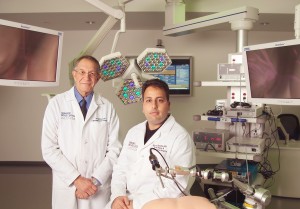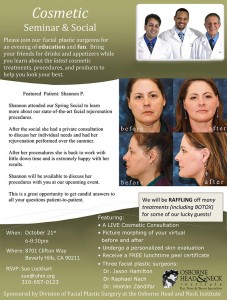- New Sublingual Allergy Tablets - October 31, 2014
- Ground-breaking New Treatment Option for Sleep Apnea - September 27, 2014
- Allergies versus Viruses in Children - September 27, 2014
- “Dog Dust” Protects Children from Allergies - September 27, 2014
- Nasal Saline Irrigation - August 8, 2014
- Doctor, I am Allergic to Dust. What Can I do? - July 31, 2014
- Infants Exposed to Dust Mites Less Likely to Develop Allergies - June 23, 2014
- How to Treat a Young Child’s Cough - December 17, 2013
- Many Parents are Unaware That Their Children Are at Risk for Noise Induced Hearing Loss - December 9, 2013
- Is it a Cold or an Ear Infection? - December 9, 2013

It is not yet clear how and why allergies develop in some children and not in others. There is a known genetic influence; however it is not uncommon for a child with non-allergic parents to have allergies. Studies have repeatedly confirmed the impact of environment on the development of allergies.
The Hygiene Hypothesis has asserted that our overly clean environment results in a lack of exposure to parasites and other microorganisms. These exposures are critical ways in which the body learns to fight infections and identify what is abnormal and what is normal in the environment. Allergy results when this process is “confused” and perceives normal things such as pollen as abnormal pathogens that must be fought. The immature immune system of a child is thought to need these challenges in order to develop in a normal way, rather than developing a hyperactive, allergic response.
Furthering this theory, it has now been shown that children raised with dogs from birth are less likely to develop allergic disease. Exposure to distinct house dust microbes in homes with dogs protects the airway against allergens and viral respiratory infections. By challenging the immune system this way, the child develops a protection against airway disease.
In addition to simply exposing the body to bacteria and allergens, timing of the exposure appears critical in modulating the immune system. Clinical studies from John Hopkins have also shown less allergies and asthma in children exposed to bacteria, dust, and animal dander at home during infancy. However, the initial exposure must be before the age of one.
Further investigation is ongoing to determine the best way to apply this knowledge towards allergy treatment. For now, getting a dog, not having a perfectly clean house and allowing your child to play in the dirt may be the easiest thing we can do to help our children avoid respiratory allergies.
To learn more about Dr. Belinda Mantle or allergy treatment, please visit www.ohni.org.



